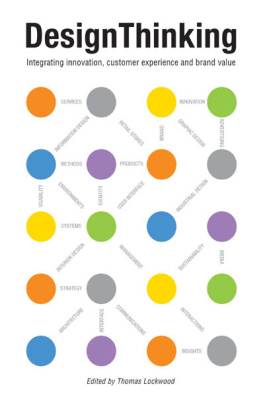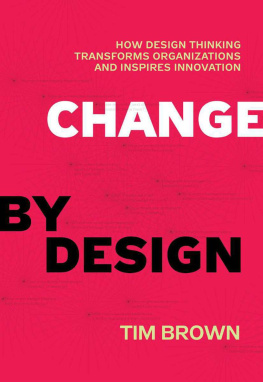Why I Wrote This Book and for Whom
Somehow weve convinced our leaders that they need to have all the answers. Weve elevated company leadership to an almost mythological state of knowing everything and never making mistakes. The reality is that all leaders, including product and website design leaders, are just as confused as everyone else. They make mistakes. They screw up. They make things up along the way. They forget lessons and lose direction. In surveys for this book, almost 50% of design leaders said they are merely reasonable leaders and still have tons to learn, and only 13% consider themselves to be very good leaders. Considering that these are the people in charge of the top design companies in North America, its confirmation that even the smartest and most experienced leaders struggle with the challenges of leadership.
This book was written partly out of personal frustration and partly because theres a lot of misunderstanding about what design leadership means. Leading a successful digital design organization is confusing and challenging. Theres no definitive manual or guidebook. The unhealthy perception that leaders have all the answers makes leaders less likely to ask for help. Thats a perception that can only lead to disappointment for both the leaders and those who look to them for direction. Design leaders need better guidance and insight. This book aims to provide some of that knowledge.
Im one of those confused design leaders. Ive been an entrepreneur in the tech and digital design space for most of my adult life. Thats about 20 years, in case youre wondering. In that time, Ive learned the hard way that nobody has all the answers. Ive also learned that as a leader, you can either find the answers through trial and error or you can go directly to the source. I prefer going to the source. If you want to know how to be a great design leader, go directly to the best design leaders. When I started my own design firm, Fresh Tilled Soil, 10 years ago, there were lots of questions. Questions with no obvious answers. For a while I believed I was supposed to learn the answers the hard way, through trial and error. Over time I learned that this was inefficient and expensive. I endeavored to read about how other leaders had solved these problems but the published answers seemed a little too generic. The real breakthroughs came when I had the opportunity to talk directly to other design leaders who were more experienced and smarter than me. These conversations inspired me to create a successful strategy for myself, which allowed me to grow a multimillion-dollar design company from the ground up with no debt and outside investors. These conversations were so helpful that I made a regular habit of calling design leaders that were way ahead of me on their personal and business journeys and asking for their advice.
I noticed that I wasnt the only one who was asking questions. These topics came up frequently during conferences, industry meetings, and casual conversations. It started to make sense to capture these conversations and gather all these perspectives and answers into a book. I imagined that what was useful to me could also be useful to other design leaders. So, to that end, this book was born.
This book is both for established design leaders and for those on the path to leadership. The book will also be useful to people who work for design leaders and want to understand them better. Ultimately, the book is for anyone who leads a design team, owns an emerging design company, or works closely with design leaders. Whether youre starting out or are decades deep into your adventure, this book will guide you through topics like hiring the best talent, building a strong culture, finding personal balance, growing your leadership skills, designing the optimal workspace, and creating healthy sales pipelines.
We interviewed leaders from emerging and established companies. In the cases where the design firm was independently owned and run by the design leader, we focused on companies in the 5 to 100 employees range. There were some exceptions, but our goal was to talk to leaders dealing with typical growing pains. Although we did speak to leaders from larger corporations like ESPN and Fidelity Investments, we gave most of our attention to small- and mid-sized design teams. About 60% of the companies interviewed had between 5 and 15 employees, while almost 40% of the companies had 20 or more employees. Several had upwards of 75 team members. The cultural differences between these companies is enormous and it would be hard to quantify those differences. Instead weve captured the individual stories, universal insights, and strategic approaches to making design groups more productive, creative, and focused.











